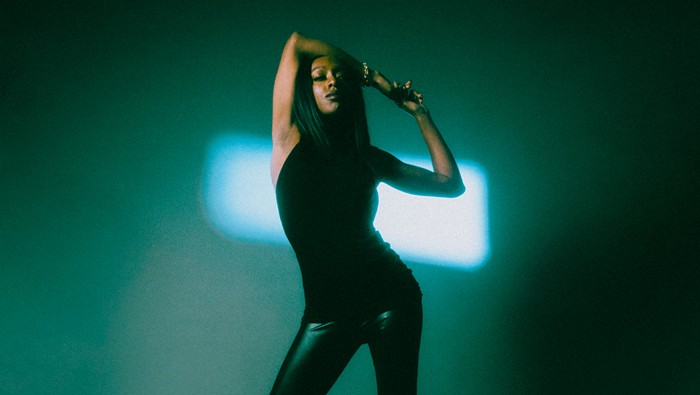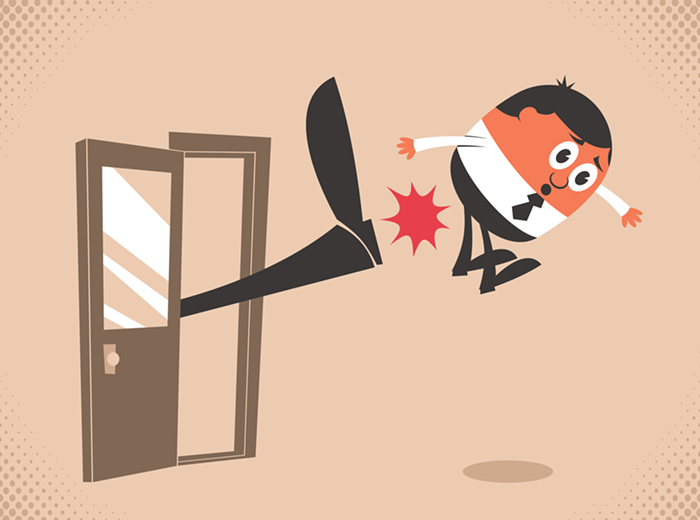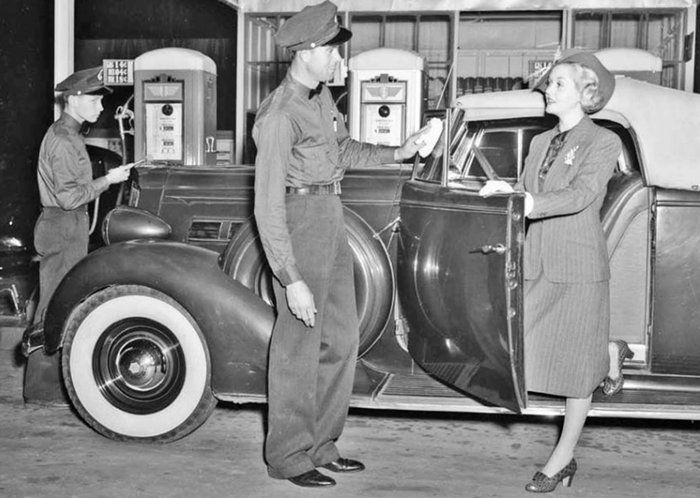ON JANUARY 8, David Bowie would have turned 70 years old. On January 10, it will be a full year since his death from cancer—a surprise that arrived almost simultaneously with the release of Blackstar, Bowie’s 25th studio album and as perfect a farewell statement as a musician has ever made.
As we emerge, slightly dazed, from the year-end onslaught of best-of-2016 lists into a fresh but fearful 2017, there’s a sense of wanting to close the book on these difficult past 12 months and all they’ve entailed—and perhaps that includes both the puzzle box of the Blackstar album and the tragic loss that accompanied it. But for me, the last year has not only refreshed and rejuvenated my lifelong love of Bowie’s work, it’s reframed his legacy in a way I never could have expected.
It makes sense that our appreciation of Bowie changes with time. Bowie’s artistic method, after all, was one of continual reinvention, starting with his first recordings from the mid-’60s. By the time his 10th single, “Space Oddity,” became his first bona fide hit in his native England in 1969, David Robert Jones had not only changed his surname, his career had already taken on several incarnations: He’d been a teenaged R&B howler, an atypically introspective mod, an impish purveyor of music-hall whimsy, and a professionally trained mime, among other roles. As a committed devotee of the weird, artsy-fartsy fringe but also transparently desirous of pop-star fame, it took a while for Bowie to carve out his place. When he did, he was miles ahead of everyone else.
But after The Rise and Fall of Ziggy Stardust and the Spiders from Mars turned Bowie into a sensation in 1972—nearly a decade after he’d first attempted entry into the pop-market mill—he didn’t sit still and bask in his hard-earned success. Bowie kept ch-ch-changing, almost too quickly for his diehard followers to keep up. It was a healthy pattern, creatively; no musical artist in history has managed to do metamorphosis as well as David Bowie. As such, it’s easy to conclude that all of his stylistic jumping around naturally evolved out of his career’s numerous, floundering false starts, resulting in a pattern he repeated subconsciously even once people started to pay attention.
I wonder about this theory. In the decades since Bowie’s golden years—which spanned, in my estimation, from 1970 to 1980—it’s become an oft-pulled pop-star trick to “reinvent” oneself. Madonna took to it like a Catholic duck to holy water; more recently, big names like Kanye, Taylor, and Beyoncé have made a great deal out of shedding their past skins in order to grow into new ones. Changing up one’s persona is perceived as one of the more artistically valid moves a musician can make nowadays (notwithstanding the occasional stumble into Chris Gaines territory), and Bowie remains the template for the strategy. It seems like he ticked off a near-complete transformation almost every calendar year, accompanying each album with not only an entirely new sound, but also a corresponding look and persona.
With his now-completed life’s work no longer unspooling in the present tense, however, the real David Bowie can be spotted in even his most deflective modes—if you know where to look. Bowie was a devourer of new art, and a sponge that soaked up cultural influences at lightning speed; his work, while celebrating artifice, is always secretly transparent, even when it’s appearing to function like a mirror. He reliably integrated his own thoughts and passions into his art-pop pastiches in a way only a master of synthesis could manage. That Bowie now seems to be perceived as some sort of astral traveler—the Starman who casually dropped into our dimension to transmit some hazy cosmic jive before blipping out again—credits the lasting quality of one of his most famous characters, even as it does a grave injustice to his overlooked talent for turning introspection into art.
Take “Always Crashing in the Same Car,” from 1977’s Low. Over Brian Eno’s coruscating keyboards and Ricky Gardiner’s Doppler-shift guitar, Bowie sighs numbly, “Every chance that I take/I take it on the road”—lines that sum up a life of trial, error, and restlessness. For Bowie, the Low period marked a retreat from the excesses of cocaine that accompanied his stint living in Los Angeles, and for most of the album, he can hardly muster a word; more than half the tracks on Low are instrumental, while others repeat the same phrases over and over. But with “Always Crashing,” Bowie finds an apt metaphor for the circular repetition of addiction (the song allegedly comes from a real-life incident in which Bowie, thinking he’d been cheated on a score, rammed his drug dealer’s car with his own). The reason it comes off like a Westworld-type science-fiction tale of a plasticized existence inside of an artificially constructed time loop is, well, because Bowie was so damn cool.
Or take “Time,” one of the archest tracks on 1973’s very arch Aladdin Sane. From a musical standpoint, it’s baroque and transcontinental, pasting together Prohibition-era barrelhouse music with pre-war Berlin cabaret (it also, memorably, features a prolonged, breathy pant from Bowie during a pause in the second verse). But while over-the-top lyrics like “The sniper in the brain/Regurgitating drain/Incestuous and vain” are what first grab the listener, the real Bowie seeps through all of that overwrought melodrama. “Demanding Billy Dolls and other friends of mine” refers to the fatal overdose and asphyxiation of his colleague Billy Murcia, original drummer for the New York Dolls. Later, the narrative evolves into a heartfelt kiss-off: “You, my love, were kind/But love has left you dreamless,” he sings. “All I had to give was guilt for dreaming.” What begins ostensibly as exaggerated vaudeville, a greasepaint lament against the cruelness and constancy of time, turns into an elegy for both Murcia and a failed relationship.
By littering his songs with references to other writers and thinkers (Kahlil Gibran in “Width of a Circle,” Aleister Crowley in “Quicksand,” George Orwell throughout Diamond Dogs), Bowie, ever the eager pupil, further revealed himself. His indelible curiosity and thirst for ideas permeated the membranes of his weirdest concoctions—as in 1995’s Outside, whose notion of ritualized murder-as-art came from Damien Hirst; or in “Joe the Lion,” which referenced Chris Burden, a performance artist who crucified himself to the top of a Volkswagen Beetle; or in the Nietzschean overtones of songs like “The Supermen” and “Oh! You Pretty Things.” Pin Ups, Bowie’s 1973 covers album, is a personal love letter to Swinging London by way of the Pretty Things and Syd Barrett’s Pink Floyd, and he continued to pay these types of affectionate tributes throughout his career, such as when he recorded Scott Walker’s “Nite Flights” for 1993’s Black Tie White Noise. Bowie’s entire catalog doubles as a wonderful sort of bibliography, a road map pointing the way to the works of music, literature, and art that rocked his world, as he, in turn, rocked ours.
While alive, Bowie was a fascinating enigma to me; now that he’s gone, I think I am able to recognize him through all of his masks. I can identify Bowie the bookworm in his cut-up approach to lyric writing (a trick pilfered from William S. Burroughs). I can absorb his deep, abiding love for pop music in his momentary infatuations for Philadelphia soul’s bittersweet optimism (Young Americans) or drum-and-bass’ wretched-sounding clatter (Earthling). I can share the thrill of his marriage to Iman in the two tracks that bookend Black Tie White Noise, “The Wedding” and “The Wedding Song.” I can hear his desperate need for redemption in “Heroes.”
David Bowie, as an entity, thwarts easy categorization. Yes, he was a talented magpie, an ever-molting icon of style, and a nonpareil processor of influence. But more than that, he was regular, ordinary Mr. Jones—a wild-eyed boy, a young dude among all the other young dudes, a kook hung up on romancing, a modern-loving guy who just wants to dance to the song they’re playing on the radio. Just offstage, watching from the wings of the freakiest show he staged so marvelously, is the David Bowie who did all the work—the work of drawing remarkable things out of our everyday experiences. It’s a Bowie I’m glad I’ve finally gotten to know.


















